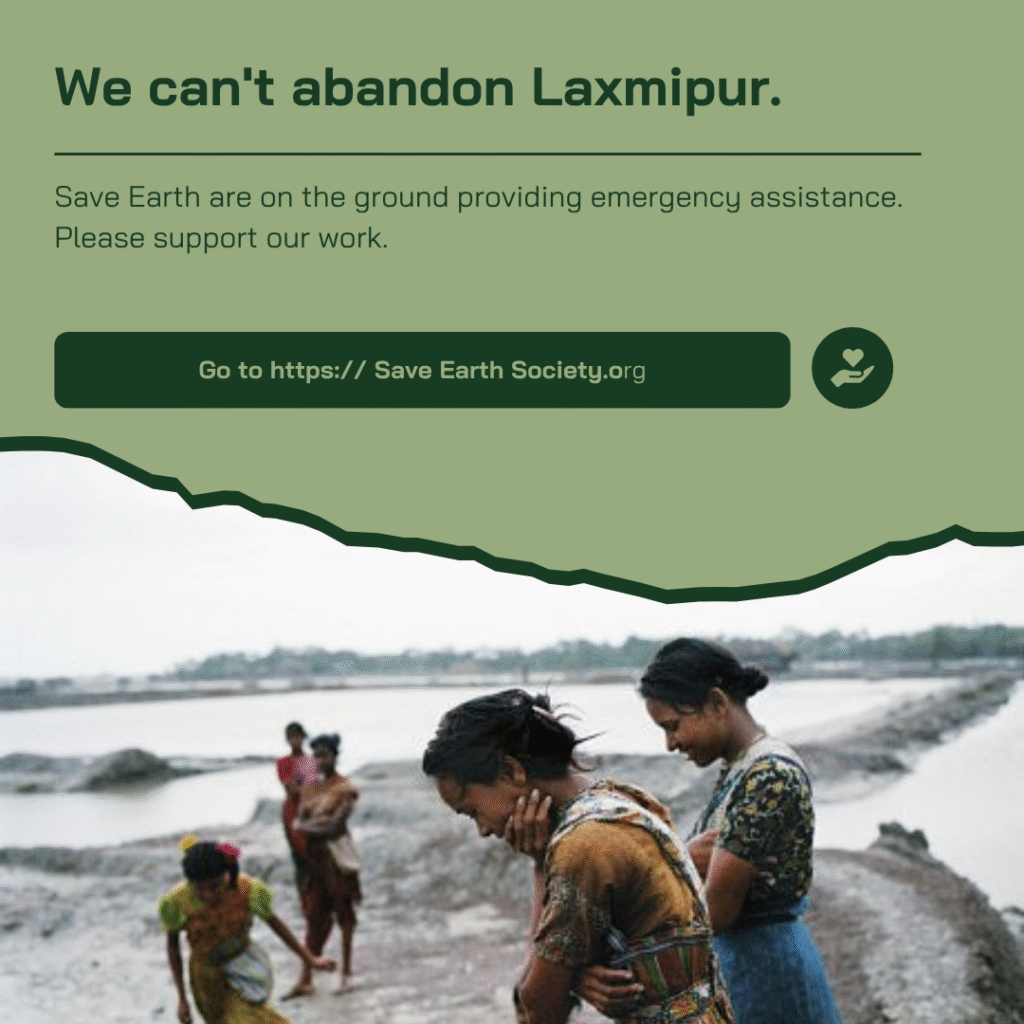
Laxmipur, a low-lying coastal district in southeast Bangladesh, is increasingly facing the harsh realities of climate change—river erosion, frequent flooding, and salinity intrusion are steadily displacing families who once called their riverside homes permanent. Many of these displaced people become climate refugees, moving to safer lands or to cities like Chattogram (Chittagong) or Dhaka.
One case: Nur Nahar Begum and her four children fled Laxmipur after their home was claimed by river erosion in 2019. Their story is one among many.
Scale of Displacement: By the Numbers
| Statistic | Value / Projection |
|---|---|
| Bangladeshis displaced by climate change in 2022 | ~ 7.1 million people Dhaka Tribune+1 |
| Projection by 2050 | Displacement could reach ~ 13.3 million people bimradbd.org+1 |
| Annual internal displacement in recent years | ~ 1,000,000 people (natural disasters), coastal districts particularly heavily affected Prothomalo+1 |
| Estimated percentage of coastal population becoming climate refugees by 2050 | ~ 17% Dhaka Tribune |
These numbers include, but go beyond, Laxmipur. However, Laxmipur is among those districts frequently mentioned in studies and interviews of climate-induced migration.
Save Earth Society: Reaching the Vulnerable
The Save Earth Society (established 2023) is a nonprofit working among underprivileged communities in Bangladesh—including those impacted by climate disasters. Their mission spans poverty alleviation, women empowerment, environmental sustainability, education, health, nutrition, and shelter.
Here are some of their relevant actions:
- Housing Scheme (“Your Home” Project): They provide safe, permanent homes for families displaced by disasters or extreme poverty. This directly assists climate refugees in places like Laxmipur where homes are often lost to erosion or flooding.
- Emergency Relief: Delivering food and shelter to families affected by floods, storms, and other natural disasters.
- Tree Plantation & Awareness Campaigns: Planting trees to mitigate environmental damage and conducting awareness programs to help local communities understand climate risks.
Voices From the Ground
“Every day 2,000 people move to Dhaka, 70% of them due to natural disasters and climate change.”
— Atiqul Islam, Mayor of Dhaka North City Corporation speaking about internal migration, many originating in coastal or riverine districts like Laxmipur.
Local families displaced by erosion often say they have nowhere else to go, leaving everything behind—fields, homes, sometimes livelihoods. The uncertainty weighs heavily especially on children and the elderly.
Challenges and Gaps
While NGOs like Save Earth Society are doing crucial work, many hurdles remain:
- Scale vs Resource: The number of people displaced often overwhelms the available relief and housing capacity.
- Temporary Solutions: Often, shelters are temporary. Long-term resettlement, livelihood restoration, and sustainable adaptation are still limited.
- Awareness and Education: Many affected communities lack knowledge about adaptation practices, early-warning systems, or climate-resilient housing.
- Funding: Reliable, sustained funding for climate refugees is hard to secure; many projects depend on donations, volunteers, or grants.
Laxmipur illustrates a microcosm of Bangladesh’s climate crisis. As land erodes and seas encroach, whole communities are forced to migrate, becoming climate refugees. Within this hardship lies opportunity—for organisations like Save Earth Society to intervene, offering more than survival—offering dignity, homes, and sustainable lives.
Saving Earth isn’t abstract—it’s every home restored, every tree planted, every child empowered to rebuild. The journey ahead is long, but with coordinated action, Laxmipur can transform from a story of loss to one of resilience.
References
- WHO: 7.1 million Bangladeshis displaced by climate change in 2022; possible rise to 13.3 million by 2050. Dhaka Tribune+2BBC+2
- Stability eludes climate refugees in Bangladesh’s sinking cities. PreventionWeb / Dialogue Earth. PreventionWeb+1
- Experts: 17% of coastal population to become refugees by 2050. Dhaka Tribune. Dhaka Tribune
- Save Earth Society official site, mission, projects.

